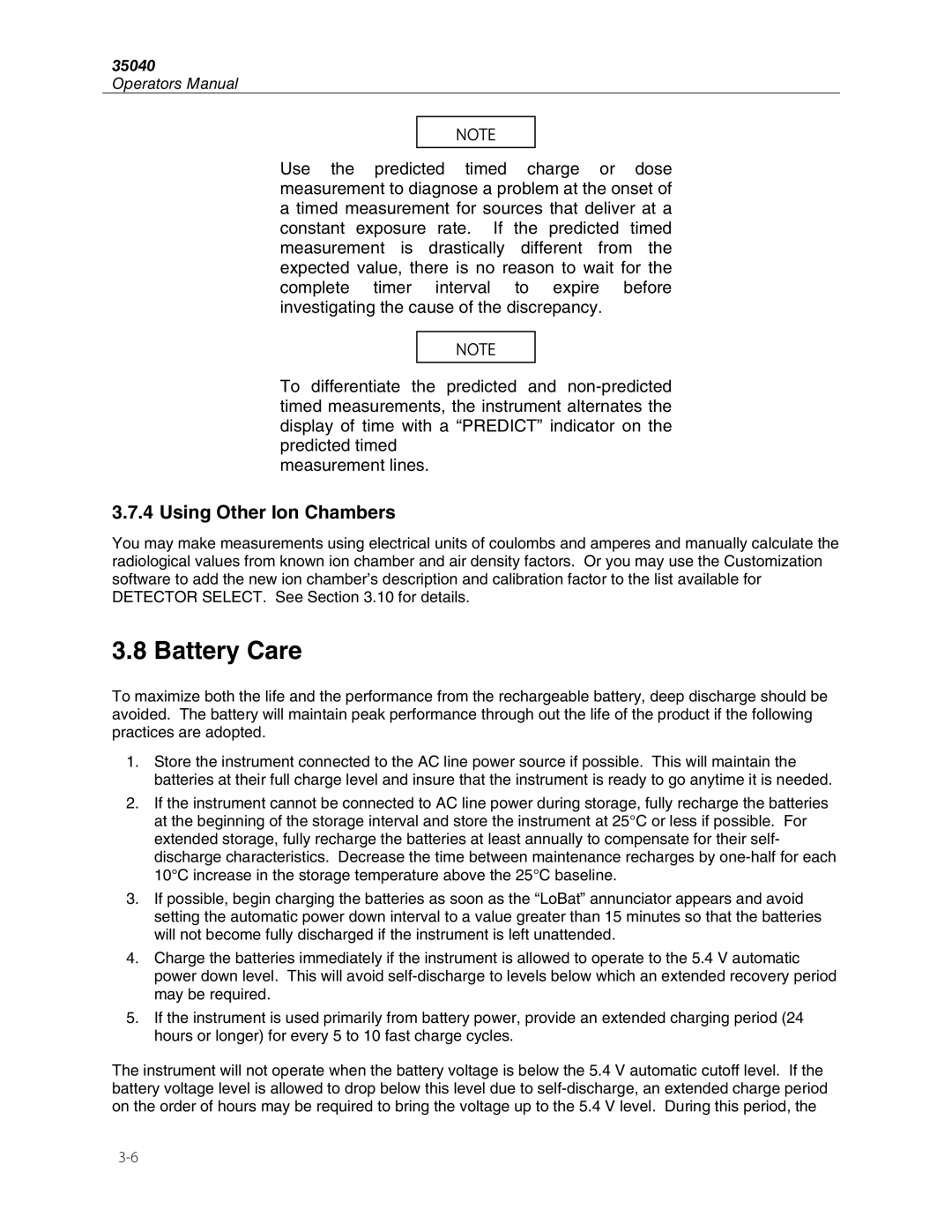
35040
Operators Manual
NOTE
Use the predicted timed charge or dose measurement to diagnose a problem at the onset of a timed measurement for sources that deliver at a constant exposure rate. If the predicted timed measurement is drastically different from the expected value, there is no reason to wait for the complete timer interval to expire before investigating the cause of the discrepancy.
NOTE
To differentiate the predicted and
measurement lines.
3.7.4 Using Other Ion Chambers
You may make measurements using electrical units of coulombs and amperes and manually calculate the radiological values from known ion chamber and air density factors. Or you may use the Customization software to add the new ion chamber’s description and calibration factor to the list available for DETECTOR SELECT. See Section 3.10 for details.
3.8 Battery Care
To maximize both the life and the performance from the rechargeable battery, deep discharge should be avoided. The battery will maintain peak performance through out the life of the product if the following practices are adopted.
1.Store the instrument connected to the AC line power source if possible. This will maintain the batteries at their full charge level and insure that the instrument is ready to go anytime it is needed.
2.If the instrument cannot be connected to AC line power during storage, fully recharge the batteries at the beginning of the storage interval and store the instrument at 25°C or less if possible. For extended storage, fully recharge the batteries at least annually to compensate for their self- discharge characteristics. Decrease the time between maintenance recharges by
3.If possible, begin charging the batteries as soon as the “LoBat” annunciator appears and avoid setting the automatic power down interval to a value greater than 15 minutes so that the batteries will not become fully discharged if the instrument is left unattended.
4.Charge the batteries immediately if the instrument is allowed to operate to the 5.4 V automatic power down level. This will avoid
5.If the instrument is used primarily from battery power, provide an extended charging period (24 hours or longer) for every 5 to 10 fast charge cycles.
The instrument will not operate when the battery voltage is below the 5.4 V automatic cutoff level. If the battery voltage level is allowed to drop below this level due to
